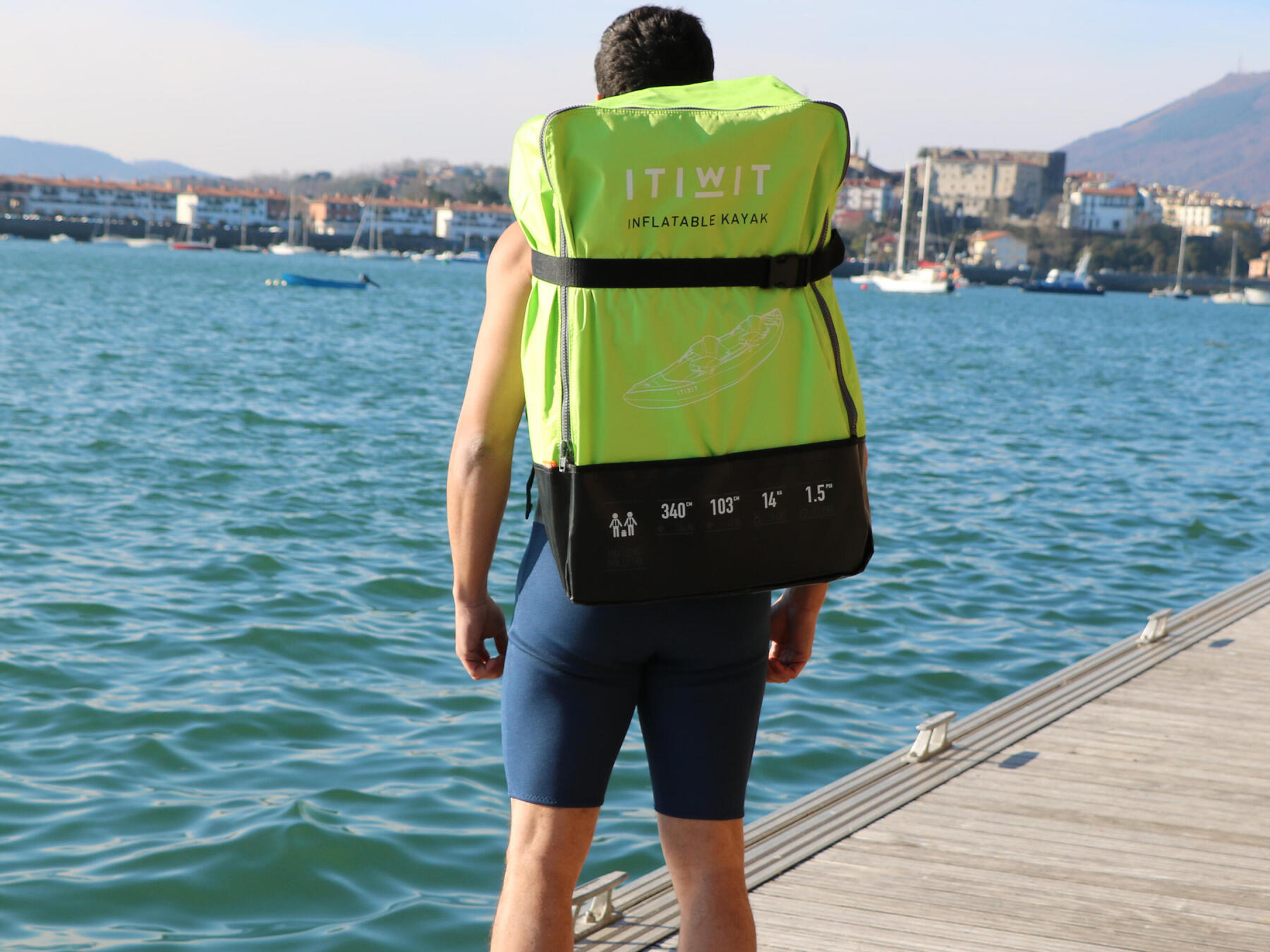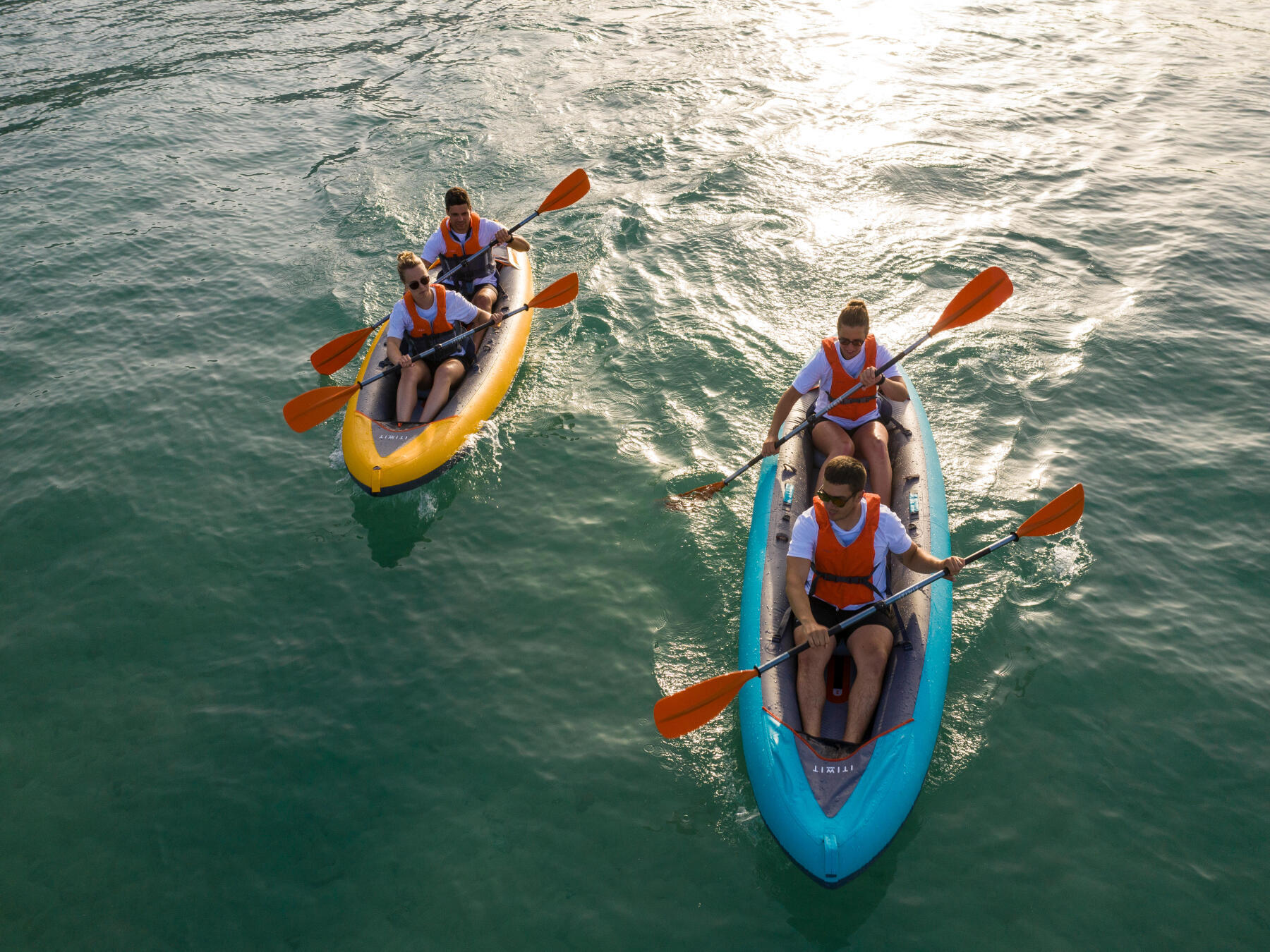#1 A kayak that is easy to transport and quick to assemble and pack away
The inflatable kayak has become the ideal alternative for autonomous, family-oriented practice free from logistical worries. It is the inflatable equivalent of the many plastic kayaks that can be found on the market.
But the inflatable kayak has many advantages:
- inflates in very little time (7 minutes precisely for the Itiwit 2 blue) with its double-action hand pump. It is even easier with the electric pump that plugs into a car cigarette lighter. Deflation is very fast (2 minutes)
- transport is no longer a problem! The inflatable kayak simply fits in the boot of your car. Goodbye roof rack! Storage at home is therefore very easy.
Good to know: It is important to let your inflatable kayak dry before folding to prevent mildew from developing and keep it in good condition. If you are unable to do this just after touring, unpack it when you get home and remove the floor by undoing the rip-tabs to dry it faster before storing it.









